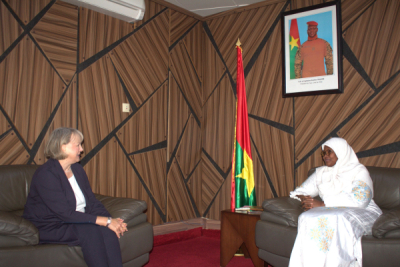The rapid rise of remote work has fueled the phenomenon of digital nomads, creating new opportunities for African countries. With growing appeal, developing infrastructure, and policies still taking shape, the continent could very well become a major player in this new global work landscape.
Since 2020, the way people work has been changing in deep but often unnoticed ways. In only a few years, digital nomadism has evolved from a niche concept into a global trend. This rise has been fueled by the digital shift in many jobs, the growth of remote work, and a growing demand for more flexible living. While it first took hold in large Western cities, the movement is now spreading across Africa, a region with the potential to unlock billions of dollars in economic value if it takes the right steps.
A Global Movement with Local Impact
Digital nomads are workers who use a laptop and an internet connection to work from anywhere in the world. It could be a freelance marketer living in Nairobi for six months, a Senegalese developer dividing her time between Dakar and Bali, or an American designer spending the summer in Zanzibar.
According to 2025 data from Nomads.com, a global digital nomad community platform, there are now more than 80 million digital nomads worldwide—and the number keeps rising. Their financial footprint is significant. On average, a digital nomad earns $124,000 annually and spends between $1,000 and $3,000 per month in their host country on housing, food, entertainment, coworking spaces, and transport. This provides a steady stream of income for local economies, without the strain of mass tourism. Americans make up the largest share, with 46 million nomads. About 88% of global digital nomads come from countries outside Africa.
|
Category |
Subcategory |
Value |
|
Age |
53% are between 31 and 39 years old |
|
|
|
Men |
91% |
|
Gender |
Women |
7% |
|
Other genders |
2% |
|
|
Education |
90% have higher education |
|
|
|
Per city |
63 days |
|
Average length of stay |
||
|
Per country |
167 days |
|
|
Average annual income |
$124,304 |
|
|
|
Full-time employees |
38% |
|
Work Status |
Startup founders |
18% |
|
Freelancers |
18% |
|
|
Top Sectors (Men) |
Software development |
35% |
|
Web development |
28% |
|
|
Startup founders |
28% |
|
|
Marketing |
16% |
|
|
Top Sectors (Women) |
Marketing |
16% |
|
Creative industry |
15% |
|
|
Startups |
12% |
|
|
Software development |
10% |
|
|
Motivations |
Work setting + getaways in Africa |
Africa Steps Into the Spotlight
Africa is starting to gain recognition as an appealing destination for remote workers. Cities like Cape Town, Johannesburg, Marrakech, Accra, Dakar, Abuja, Luanda, Libreville, and Cotonou are seeing growing interest. These places attract a new wave of remote workers seeking authentic experiences, lower living costs, and meaningful social connections. Many of these cities offer reliable high-speed internet, electricity, modern accommodation and workspaces, and access to food, transport, and healthcare—making it possible to balance productive workdays with tourist exploration.
This trend is not limited to foreign visitors. A growing number of young Africans in digital fields—web development, design, content creation, community management—are also embracing a mobile lifestyle, often within the continent. This intra-African nomadism is supported by countries offering full or partial visa exemptions, such as Senegal, Benin, Kenya, Ghana, and Rwanda. These policies are reshaping how professionals move and work in Africa’s digital age.
Billions in Economic Opportunity
According to global immigration firm Newland Chase, the 35 million digital nomads counted in 2021 contributed $787 billion to the global economy. Although detailed data for Africa is lacking, a modest projection suggests the continent could earn $6 billion per year if it hosted 500,000 foreign digital nomads spending $1,000 monthly. If Africa attracted just 2% of the world’s estimated 80 million nomads in 2025—that is 1.6 million individuals—the continent could bring in close to $20 billion annually through direct local spending.
Beyond daily spending, digital nomadism can fuel growth in sectors such as short-term housing, food and hospitality, internet services, local transport, and leisure activities like hiking and tourism. Thousands of small businesses—especially in urban areas—stand to benefit from this expanding market.

Early but Promising Initiatives
Some African countries have already started tailoring offers to digital nomads. In 2020, Mauritius introduced its Premium Visa. It is free, valid for one year (renewable), and available to citizens of 114 countries. Applicants must prove that their main income is earned outside Mauritius and show a minimum monthly income of $1,500.
Cape Verde launched a similar visa in 2020, targeting both tech and tourism. The visa lasts six months (renewable) and requires payment. Digital nomads in Cape Verde are exempt from income tax and local taxes. While there is no official income threshold, applicants must show an average bank balance of at least €1,500 over the previous six months.
In 2024, South Africa joined in with its digital nomad visa, allowing stays from three months to three years. Applicants must provide three months of bank statements showing a gross annual salary of at least 650,796 rand (about $36,782).
Other countries like Namibia and Kenya also launched digital nomad visas in 2024 to attract skilled professionals and boost their economies. However, Africa still lags behind Latin America and Southeast Asia, which already offer nomad visas, tech hubs, tax incentives, and tailored services.
Challenges That Remain
Africa has clear potential to benefit from digital nomadism. Internet coverage is improving across the continent. According to the International Telecommunication Union, 4G now covers 71% of the population, while 3G covers 86%. However, 5G still only reaches 11%. In urban areas, 4G covers 73% and 5G reaches 25%. Countries like South Africa, Senegal, Mauritius, Nigeria, Botswana, Ethiopia, Seychelles, Tunisia, and Lesotho already offer 5G access in their capitals. In rural areas, coverage is lower—49% for 4G, 26% for 3G, and 14% for 2G. While major cities usually offer stable internet, many secondary regions do not.

Another barrier is cost. The cheapest mobile data plan (2GB) costs 3.9% of the average monthly gross national income (GNI) per person, while fixed internet (5GB) costs 13.4% of GNI. These rates are considered high, exceeding the United Nations target of 2% of GNI for affordable access. Globally, the average cost is closer to 1% of GNI for mobile and 2.3% for fixed internet.
Other obstacles include political and security concerns, especially in areas affected by instability—although these are a minority. The lack of a clear legal status for digital nomads also makes many destinations less appealing. Tourist visas are not designed for extended stays and lack tailored benefits. To change this, digital nomadism needs to be integrated into national policies on tourism, entrepreneurship, and youth employment.
Digital nomadism is not just a trend or a lifestyle for Western elites. It reflects a deep shift in how the world works. Africa has a real chance to play a leading role—if it invests, plans, and innovates wisely.



















